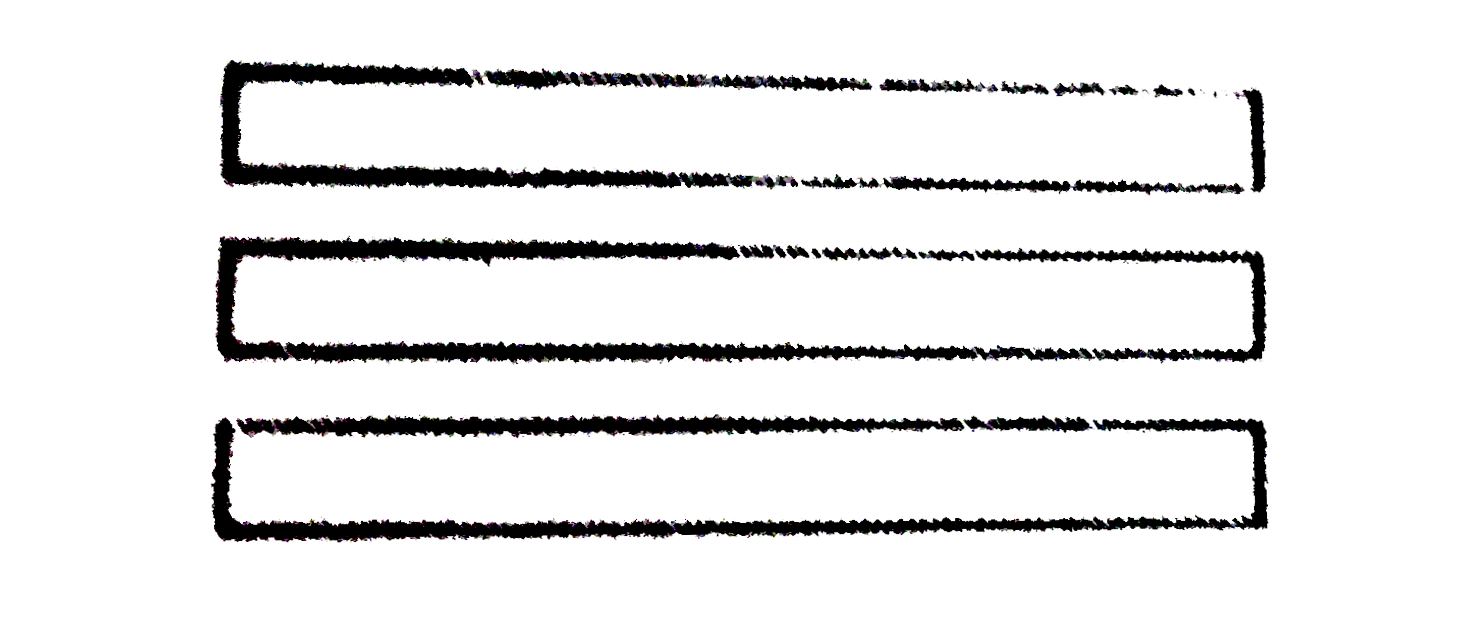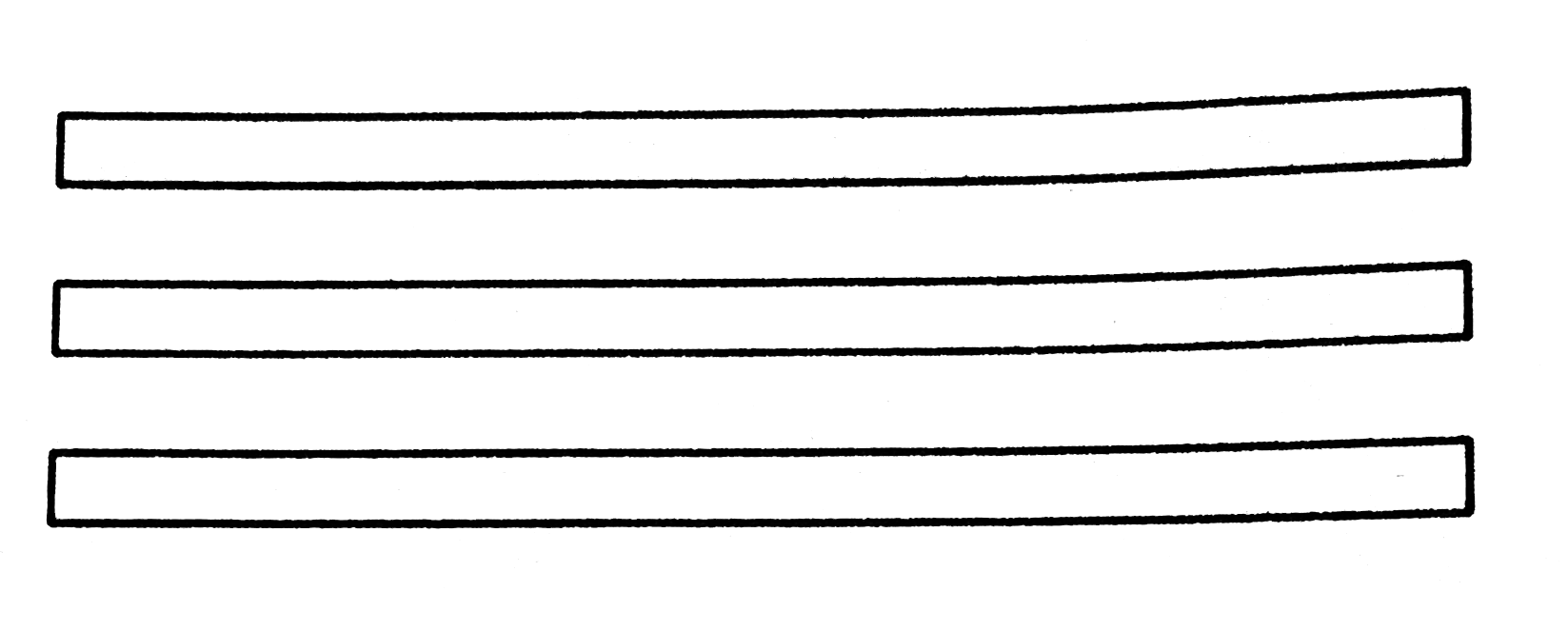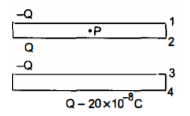Three conducting plates of area 500cm2 area kept fixed as shown. Distance between adjacent plates is 8.85 mm. A charge of 1.0nC is placed on the middle plate. (a) The charge on the outer surface of the upper plates is given by n×10−11C then find the value of n. (b) Find the potential difference (inV) developed between the upper and the middle plates.

The correct Answer is:(a) 50 (b) 10
Step by step video, text & image solution for Three conducting plates of area 500 cm^(2) area kept fixed as shown. Distance between adjacent plates is 8.85 mm. A charge of 1.0 nC is placed on the middle plate. (a) The charge on the outer surface of the upper plates is given by nxx10^(-11)C then find the value of n. (b) Find the potential difference (inV) developed between the upper and the middle plates. by Physics experts to help you in doubts & scoring excellent marks in Class 12 exams.
Updated on:21/07/2023Topper's Solved these Questions
- CAPACITANCEBOOK - RESONANCECHAPTER - CAPACITANCEEXERCISE - Exercise - 3
26 Videos
- CAPACITANCEBOOK - RESONANCECHAPTER - CAPACITANCEEXERCISE - High Level Problems
16 Videos
- CAPACITANCEBOOK - RESONANCECHAPTER - CAPACITANCEEXERCISE - Exercise - 1
79 Videos
- ATOMIC PHYSICSBOOK - RESONANCECHAPTER - ATOMIC PHYSICSEXERCISE - Advanved level problems
17 Videos
- COMMUNICATION SYSTEMSBOOK - RESONANCECHAPTER - COMMUNICATION SYSTEMSEXERCISE - Exercise 3
13 Videos
Similar Questions
The capacitance between the adjacent plates shown in figure is 50nF . A charge of 1.0μCis placed on the middle plate (a )What will be the charge on the outer surface pf the upper plate ? (b ) Find the potential difference developed between the upper and the middle plates .

View SolutionA charge of+2.0×10−8C is placed on the positive place and a charge of -1.0×10−8Conthe¬ativeplateofaparal≤l−plate∩aci→rof∩acitance 1.2 xx (10^-3) mu F. Calculate the potential difference developed between the plates.
View Solution
Knowledge Check
Three identical conducting plain parallel plates, each of area A are held with equal (/ between successive surfaces. Charges 2Q, and 3Q are placed on them. Neglecting edge effects, find the Charge on the left face of the middle plate
A0B2QC3QDNone of the AboveIf A is the area of each plate, charge on it is q and potential difference is V then the distance between the parallel plate capacitor is
Aε0AV2qBε0AVqC2ε0AVqDAVqFive identical plates each of area a are joined as shown in the figure. The distance between the plates is d. the plates are connected to a potential difference of V volt. The charge on plates 1 and 4 will be
 A−ε0AVd.2ε0AVdBε0AVd.2ε0AVdCε0AVd.−2ε0AVdD−ε0AVd.−2ε0AVd
A−ε0AVd.2ε0AVdBε0AVd.2ε0AVdCε0AVd.−2ε0AVdD−ε0AVd.−2ε0AVd
A charge of 1μC is given to one plate of a parailel - plate capacitor of capacitance 0.1μF and a charge of 2μC is given to the other plate . Find the potential difference developed between the plate .
View SolutionA charge of 20 muC is placed on the positive plante of on isolated parailel - plate capacitor of capacitance 10μF calculate the potential difference developed between the plates .
View SolutionConsider the arrangement of parallel plates of the previous problem. If 1.0 nC charge is given to the upper plate instead of the middle, what will be the potential difference (in V) between (a) the upper and the middle plates and (b) the middle and the lower plates ?
View SolutionConsider the situation of the previous . If 1.0μC is placed on the upper plate instead of the middle , what will be the potential difference between (a ) the upper and middle plates and (b ) the middle and the lower plate?
View SolutionThe negative plate of a parallel plate capacitor is given a charge of −20X10−8C. Find the charges appearing on the four surface of the capacitor plates.

View Solution
